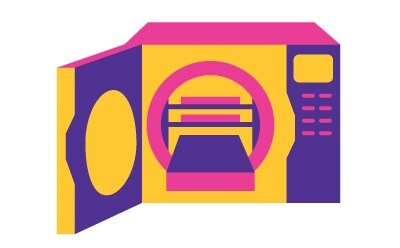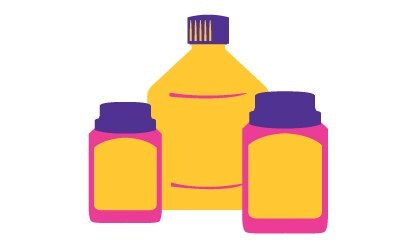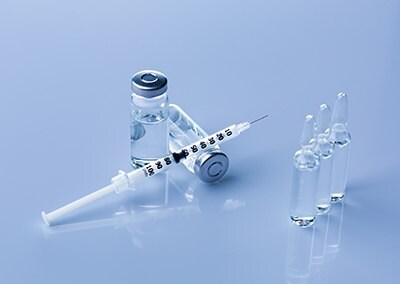Solutions for Injectables and Parenteral Formulations
Sterility is key for high-risk applications such as injectables, parenteral formulations, ophthalmic and peritoneal dialysis solutions, and many more. The regulatory landscape has been evolving with increased demands from regulatory agencies to improve patient safety.
Mitigating Risk for Injectable and Parenteral Formulations
High-risk products must be sterile and essentially free from endotoxins. A manufacturer cannot rely only on terminal sterilization processes or quality control testing to assure that these requirements are met. Key considerations for high-risk application include:
- Minimizing the risk throughout the process to yield a safe product.
- Using high-quality, low-in-bioburden raw materials as bioburden has to be in line with the capabilities of the selected sterilization method.
- Using raw materials low in endotoxins for improved patient safety.
Products

Selection of Sterility Method
Terminal sterilization is the method of choice as it limits potential errors, is possible to validate and control and, as a result, supports improved patient safety. However, it might not be possible to use in all cases for example due to incompatibility of the selected packaging option or potential degradation products.
Whether terminal sterilization or aseptic processing and sterile filtration is used, minimizing risk throughout the process is critical to yielding a safe product with the environment, personnel, components, equipment, and processes as typical factors to consider. In addition, quality control, risk assessment, and risk management must be in place.

Secure, Consistent, Risk-Mitigated Raw Materials
To mitigate risks, it is best to reduce bioburden quantities throughout the entire process. Microbial contamination presents a risk to the patient and may also induce formulation and API instabilities. By-products caused by microbial contamination are equally critical and may potentially go undetected with established routine tests. This is why it is important that bioburden quantities are controlled in potential sources of contamination.
Minimized bioburden levels through the choice of raw materials and aseptic processing support pre-sterilization microbial loads that are appropriately low for the selected sterility method to ensure the final sterility of the drug product.

The Endotoxin Challenge
It is difficult to remove endotoxins from raw materials, and nearly impossible to remove them from the formulation. Compared to other types of formulations, endotoxins in parenteral formulations pose an added risk to patient safety. Therefore, these have stricter regulatory requirements with respect to endotoxins.
Precautionary measures are therefore critical especially when the materials are from natural sources or are biologically produced, or when non-sterile bulk steps or preservation-free solutions are involved.
Our Portfolio Backed by Regulatory Documentation
As your preferred partner for high-risk formulations, we offer extensive regulatory know-how and the expertise to help you implement your precise goals. We will support you with exactly the right mix of pharma and biopharma products services, and expertise that you need.
Our extensive portfolio provides high-quality raw material solutions, backed by deep regulatory, technical and application expertise. Why? Because we understand the critical importance of patient safety and your need for security and scalability. Key aspects of what we provide are the highest standards of quality, purity, and reliability for your parenteral formulation products.
The Emprove® Program enables you to reduce time and effort by providing regulatory documentation. It includes over 400 raw and starting materials as well as 20 filter and single-use product families to help you navigate regulatory challenges, manage risks, and improve manufacturing processes. Our far-sighted regulatory expertise and documentation minimize risk and accelerate speed to market.
Based on the requirements and challenges that you face, we as your reliable and loyal partner provide the:
- Emprove® Expert product portfolio to meet the requirements of high-risk liquid applications with specified low endotoxin and bioburden levels
- Emprove® Dossiers supplying comprehensive, up-to-date documentation supporting risk assessment
- Elemental Impurity Information according to ICH Q3D
- Regulatory know-how and expert support
To continue reading please sign in or create an account.
Don't Have An Account?